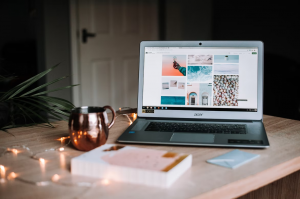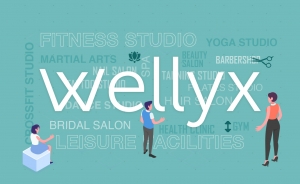Standout in crowded events with custom flags that draw attention to your booth, promote your brand and build a strong visual identity. Learn how to craft eye-catching designs that captivate your audience with tips from this ultimate guide.
Keep text minimal, especially if you want your flag to be legible from a distance. Fancy fonts and elaborate details can be attractive up close, but will be hard to read from afar.
Choosing the Right Colors
The right colors can make a big difference in your flag design. They are often the first thing people notice, and they can help create a connection with your audience. For example, red flags can convey a sense of urgency and encourage action, while blue flags can evoke feelings of trust and security. It is important to choose colors that are relevant to your brand's message and tone, as well as your target audience's demographics and preferences.
When designing your custom flags, it is also important to consider the color theory behind complementary colors. Complementary colors are those that are opposite each other on the color wheel, and they can create a vibrant look for your flags. Examples of complementary colors include green and red, orange and blue, and yellow and purple. By using these color schemes, you can create a cohesive and aesthetically pleasing design for your custom flags.
Finally, it is important to keep in mind that your flags will be viewed from a distance, so it is important to choose colors that are bold and easy to read. Choosing a dark color for your background and contrasting it with light-colored text and graphics is an effective way to make your flags more readable. Similarly, selecting images that are simple and easy to understand can also enhance your flag's effectiveness.
Choosing the Right Fonts
If you want to maximize the effectiveness of your custom flag, choose a font that complements your color scheme and aligns with the rest of your branding. Also, select a typeface that is easy to read from far away so that you can communicate your message to people standing or driving by.
A great font for custom flags is Gill Sans, which has both a classic and modern feel. It's also clear and readable from a distance, so it's a good choice for large titles or the body text of your flag. Another option is Source Serif Pro, which is popular with businesses because of its clean and professional look. It's also readable at a distance and is often used by British Railway and Penguin books.
You should also keep in mind that people typically read left to right and top to bottom, so it's important to create a visual hierarchy with your text sizes. Make sure your most important information is the largest and work down from there.
Custom flags are a great way to enhance your brand visibility and promote your business at events and trade shows. They can be personalized with your company's logo, colors, and messages to create a unique identity and stand out from the competition. However, it's important to choose the right color scheme, font, and images to ensure your flag is effective.
Choosing the Right Images
When you create a custom flag, it's important to choose the right images and fonts. Don't be tempted to add too much text; it can quickly make the design look cluttered and visually unappealing. If you do decide to include some text, make sure that it is legible from far away. Avoid fancy fonts that have a lot of flair or intricacy; these may be attractive up close, but they won't be easily read from a distance.
It's also important to consider the type of event you're attending or the message that you're trying to convey. If you're using the flag to promote a special sale, for example, it makes sense to use a picture of a product that people would want to purchase. Similarly, if you're promoting a charity, a photo of kids on a playground can help draw in supporters.
Another factor to consider is whether you want the flag to be single- or double-sided. A double-sided flag will allow your graphics to be seen on both sides of the material, which can maximize your visibility. However, a single-sided flag will be more cost-effective because you won't need to buy an additional piece of material. If you're unsure which option is best for you, consult a professional for advice. They can provide valuable guidance and offer design services to ensure a polished final product.
Choosing the Right Placement
Regardless of the design elements chosen, the overall impact of a custom flag will depend on its placement. Because the flag will be viewed from a distance by people walking, driving or standing around, it is important to ensure that the critical elements of the design can be easily read from afar. This can be achieved by using bold colors and high-contrast text. It is also important to avoid fancy fonts, as they can be difficult to read from a distance and may cause the custom flag to look cluttered and confusing.
For maximum visibility, a custom flag should be placed where it can attract the attention of potential customers. For example, if a company is participating in an event, displaying a custom flag near the entrance can draw people to their booth and entice them to explore their products or services. Alternatively, custom flags can be used to communicate event information such as schedules, locations and special promotions.
Choosing the right fabric for a custom flag can also help enhance its performance and durability. For example, polyester has a bright finish that is ideal for outdoor use, while nylon is durable and withstands windy conditions. Finally, cotton is a traditional choice for indoor flags and can be embroidered with custom text or graphics to create a unique look.






